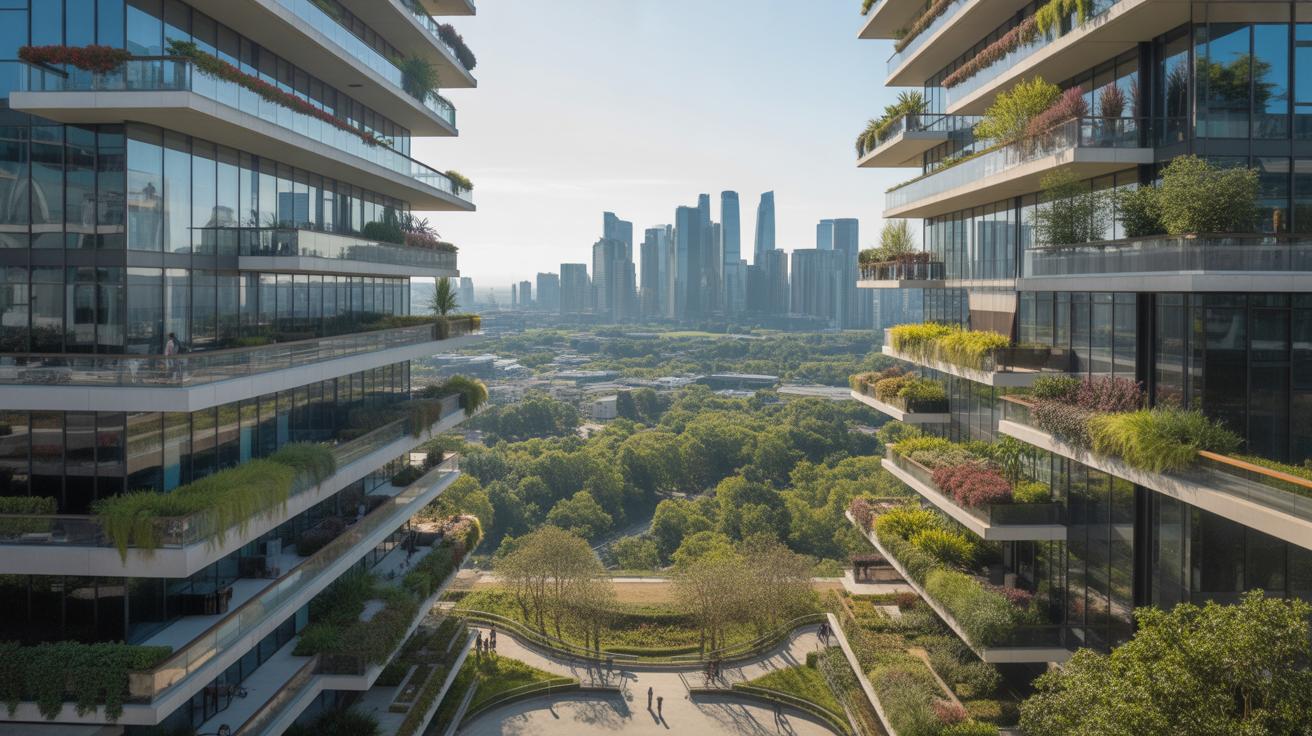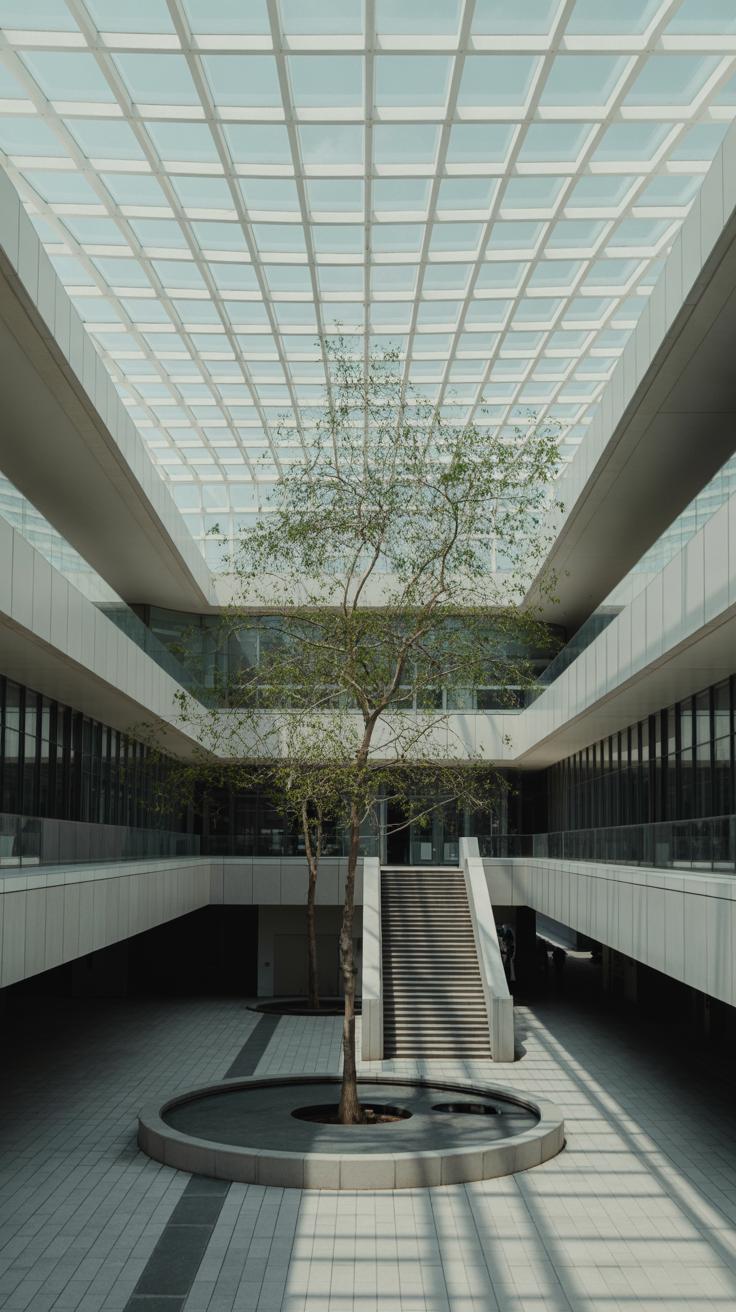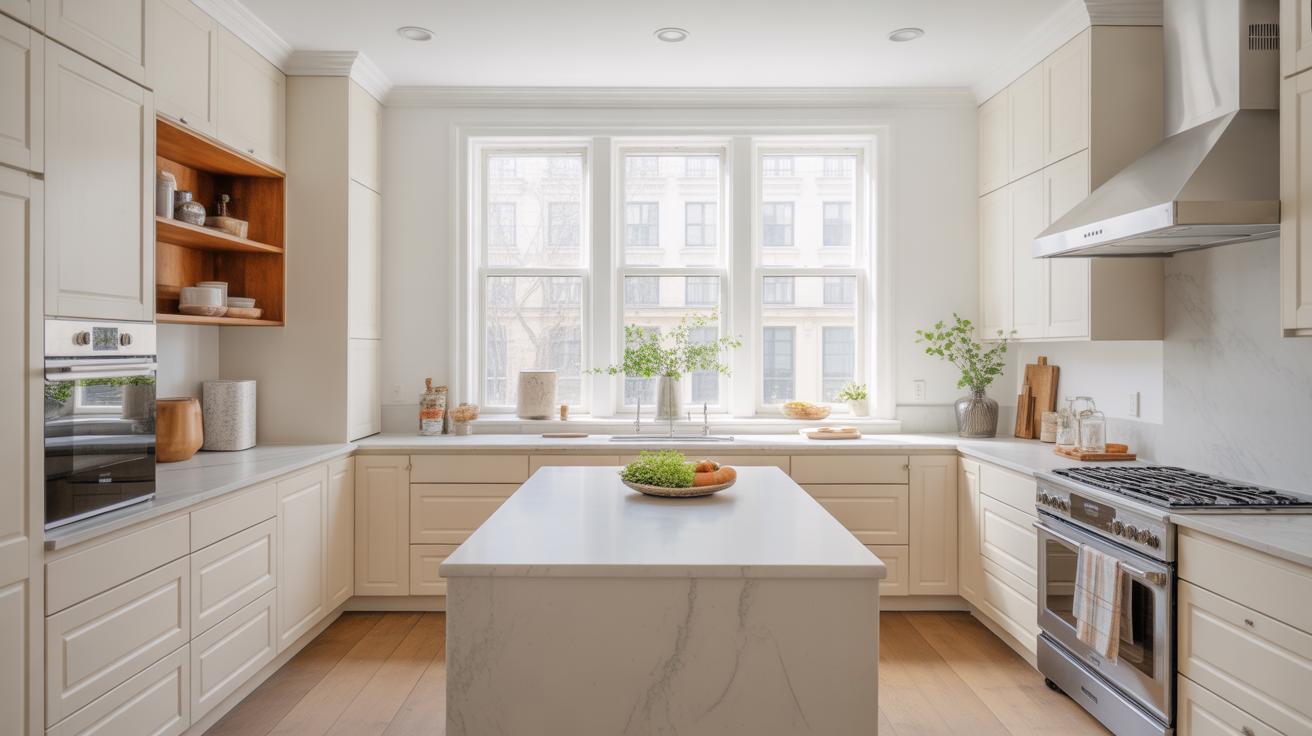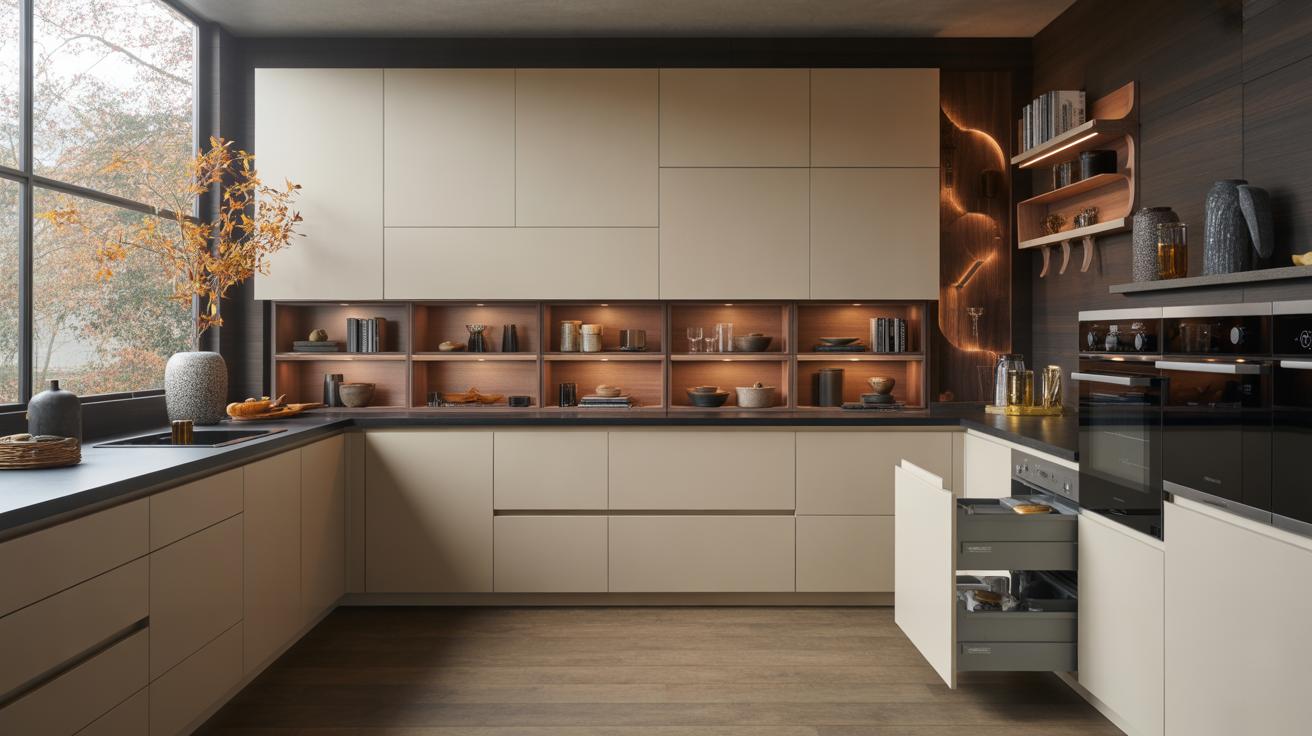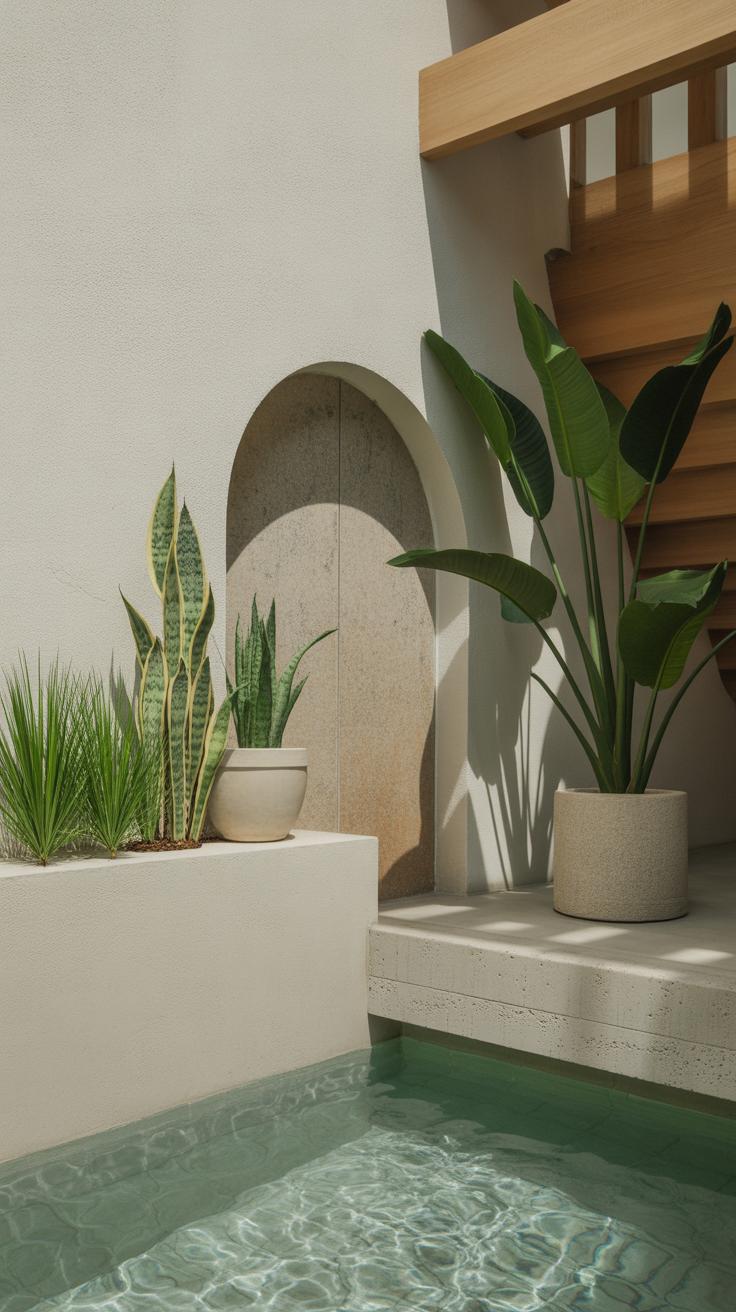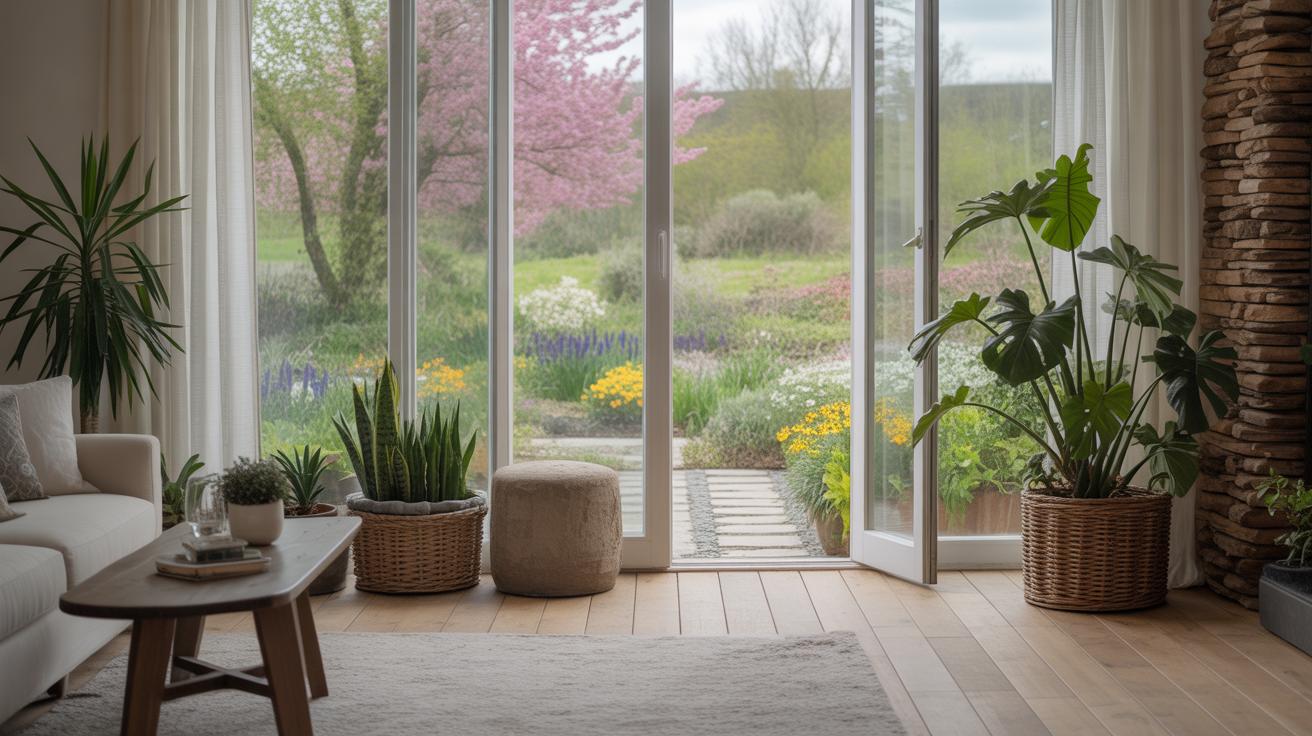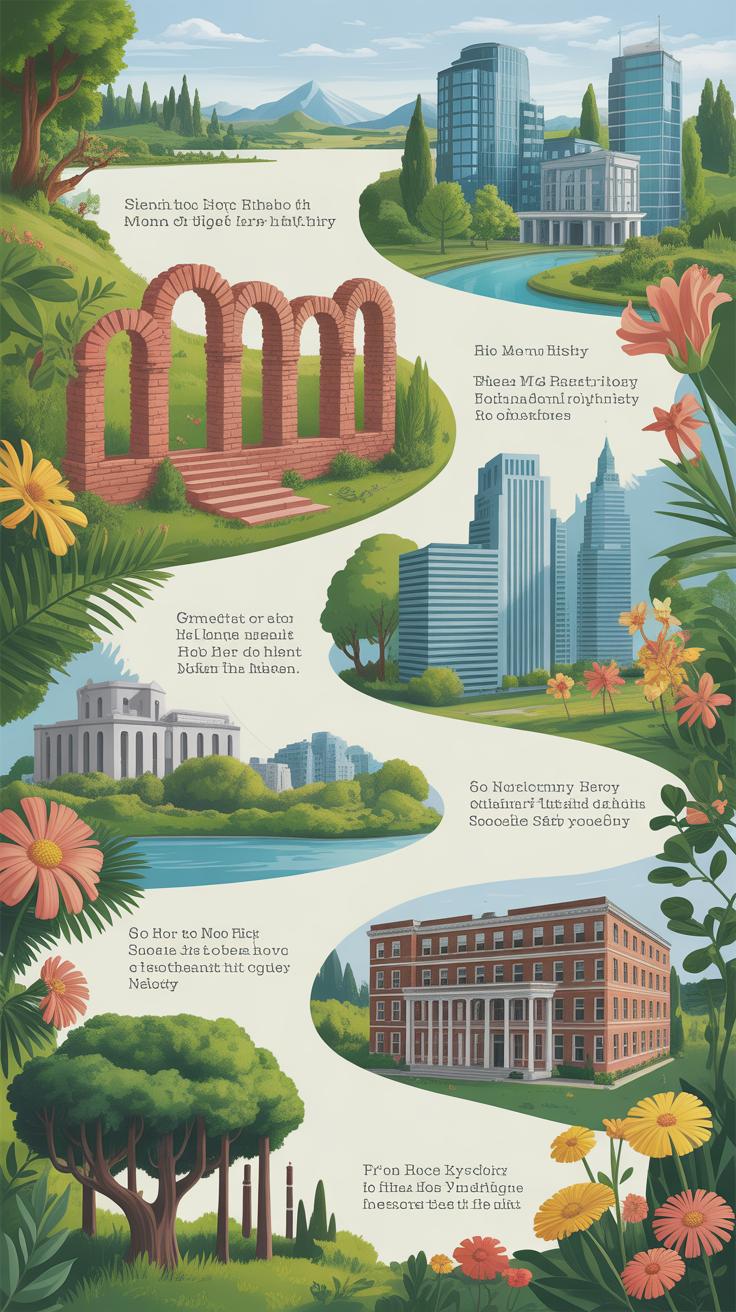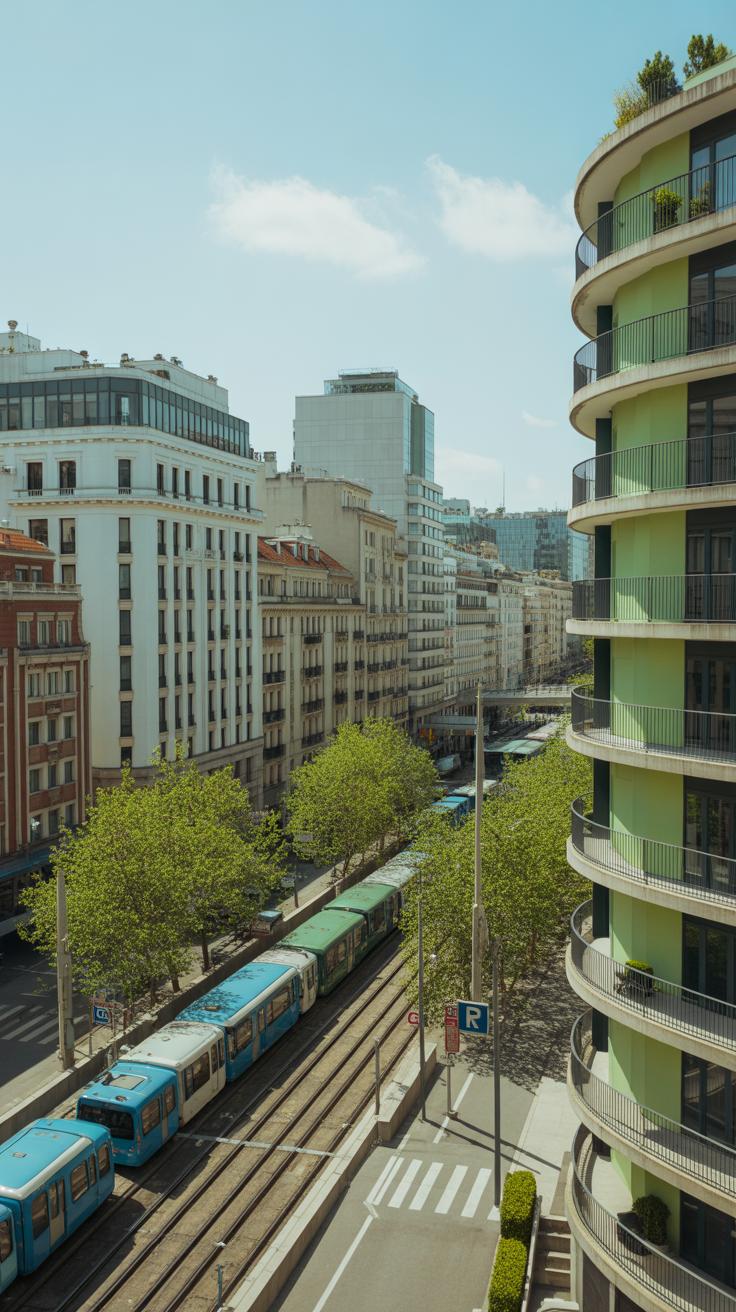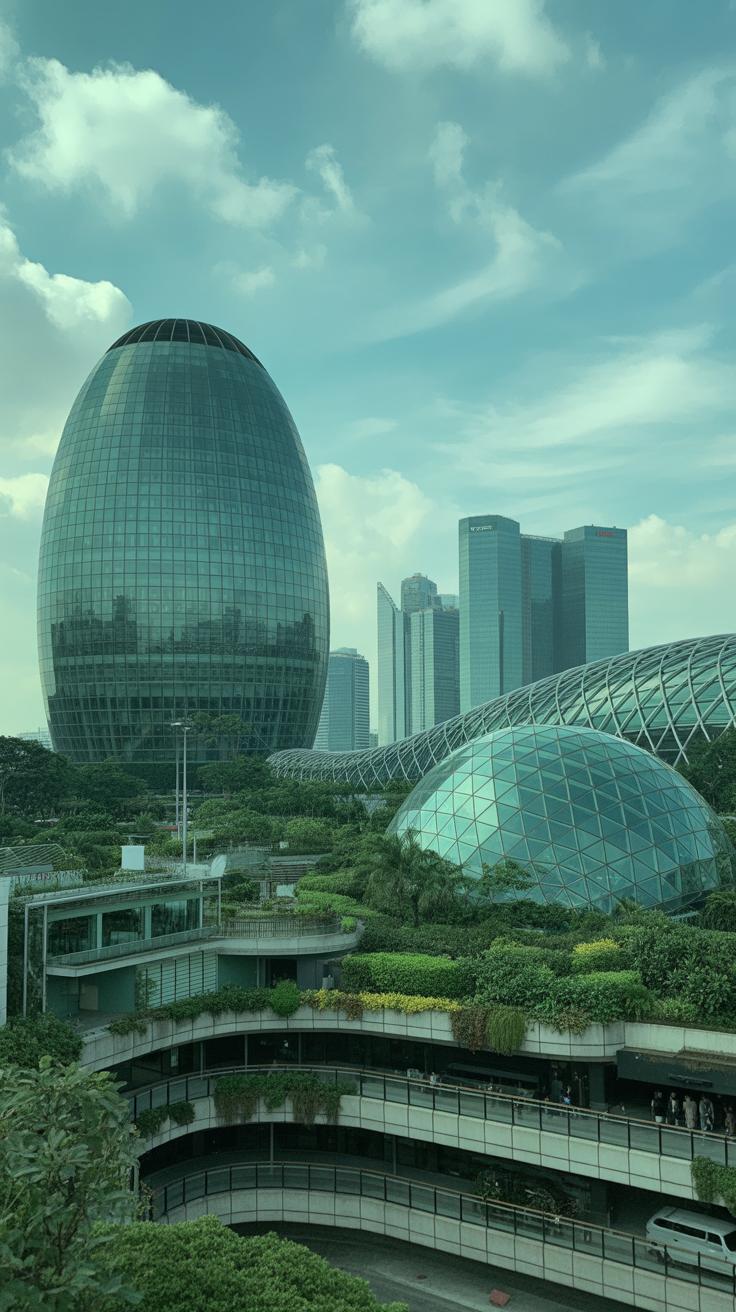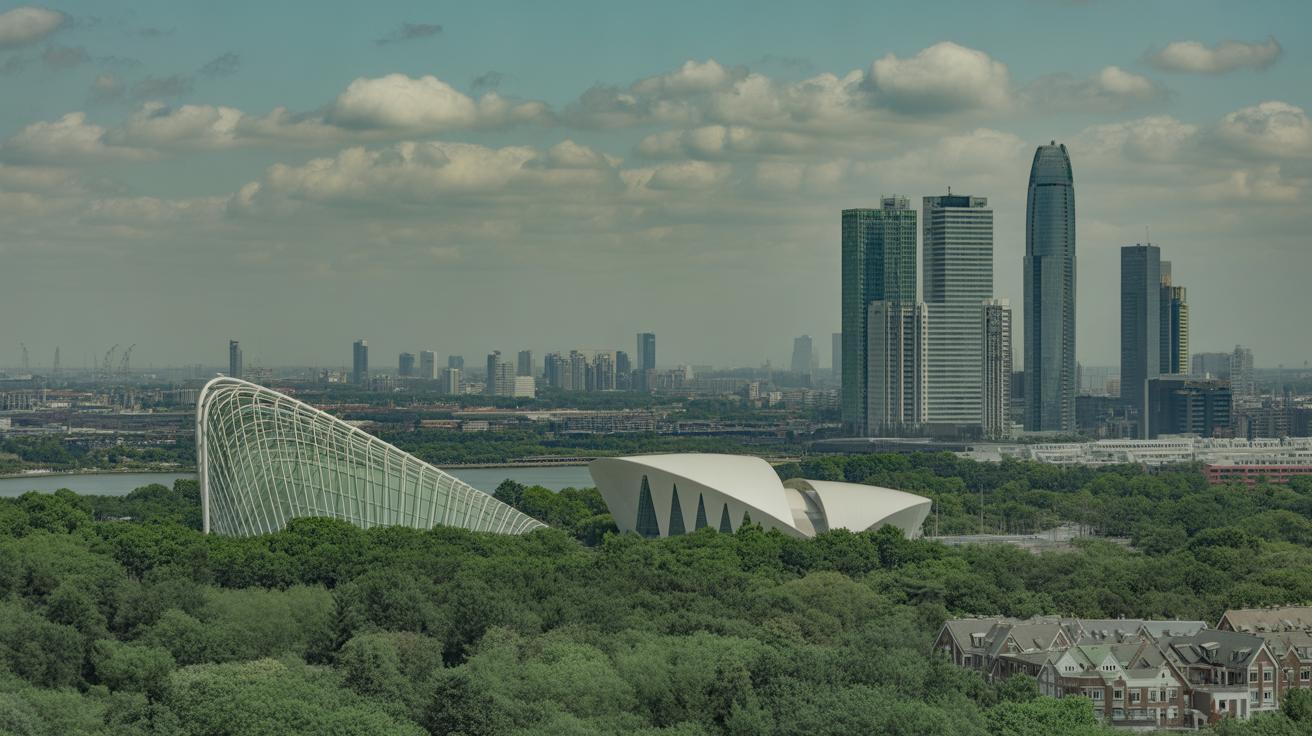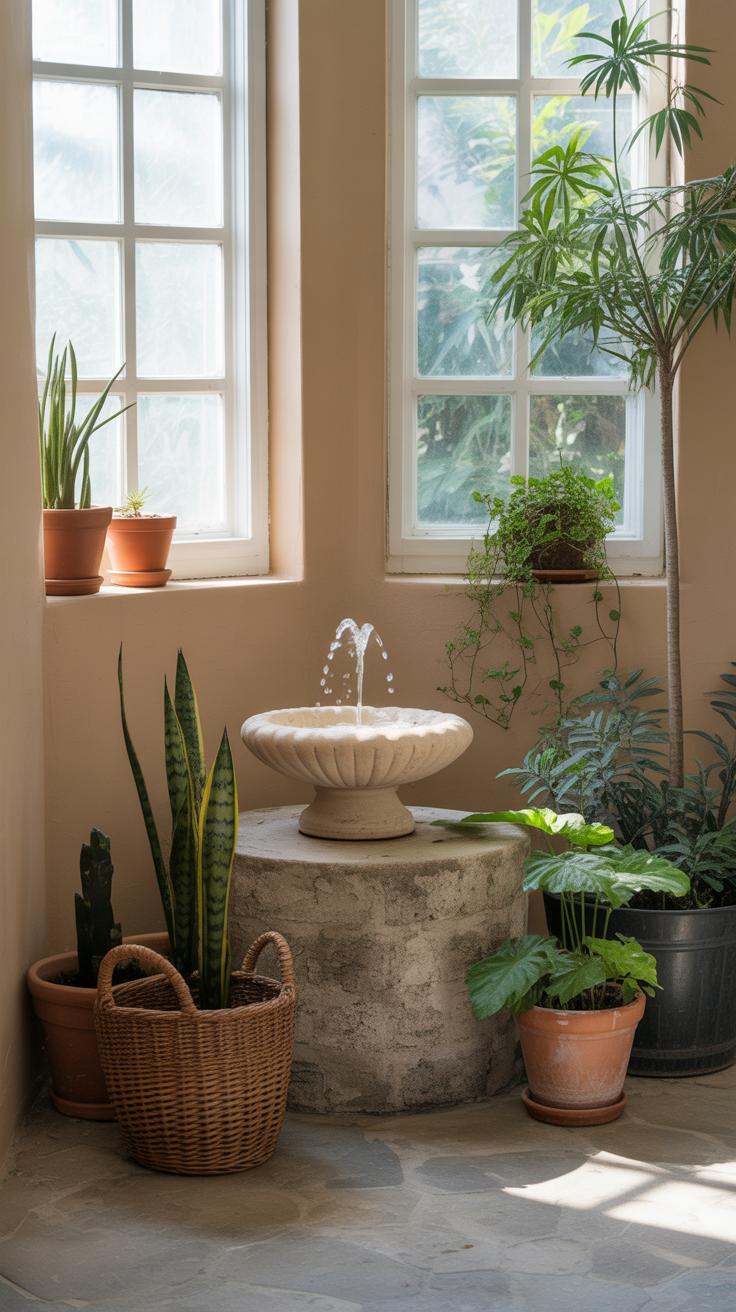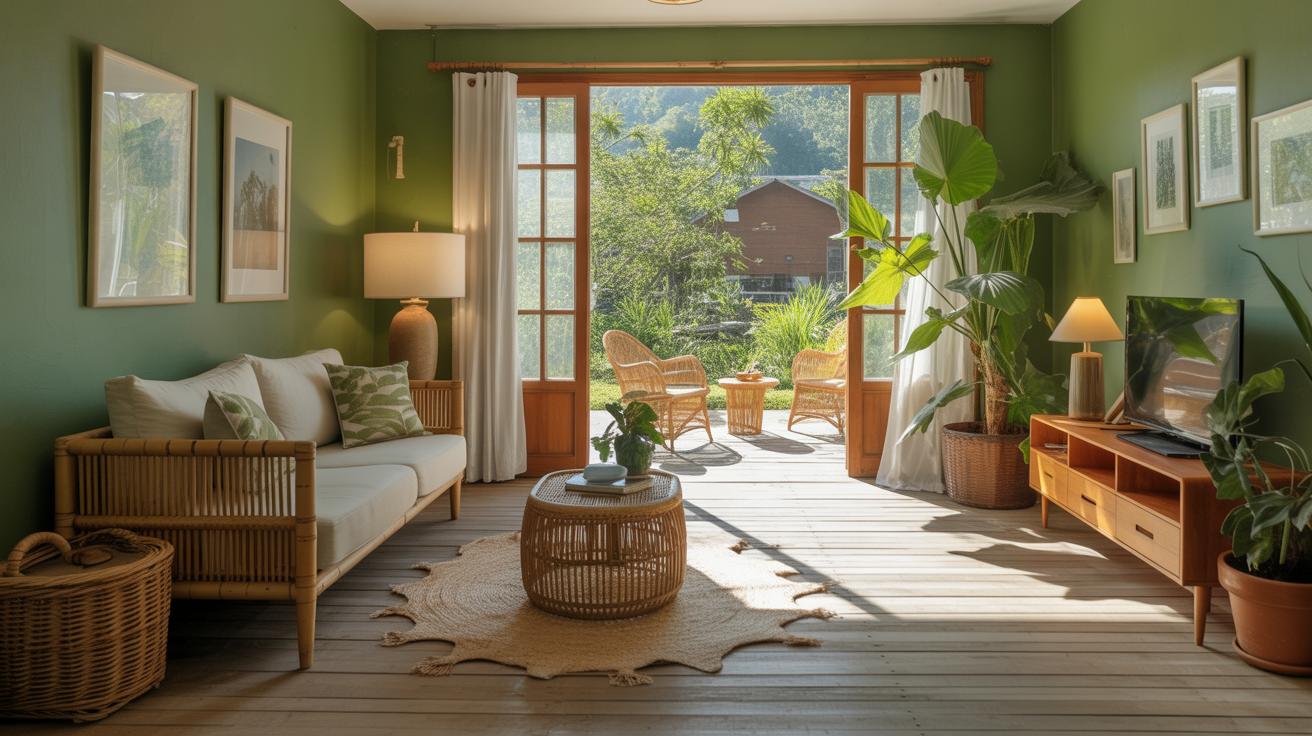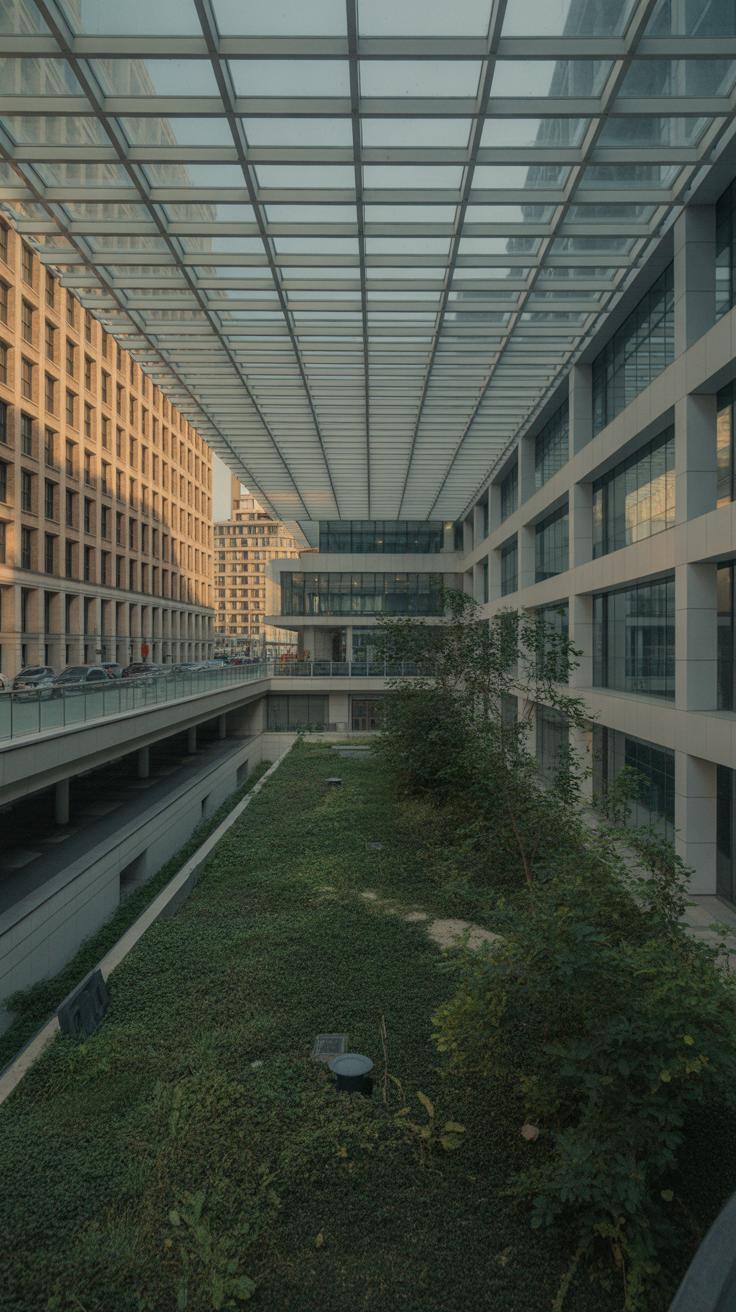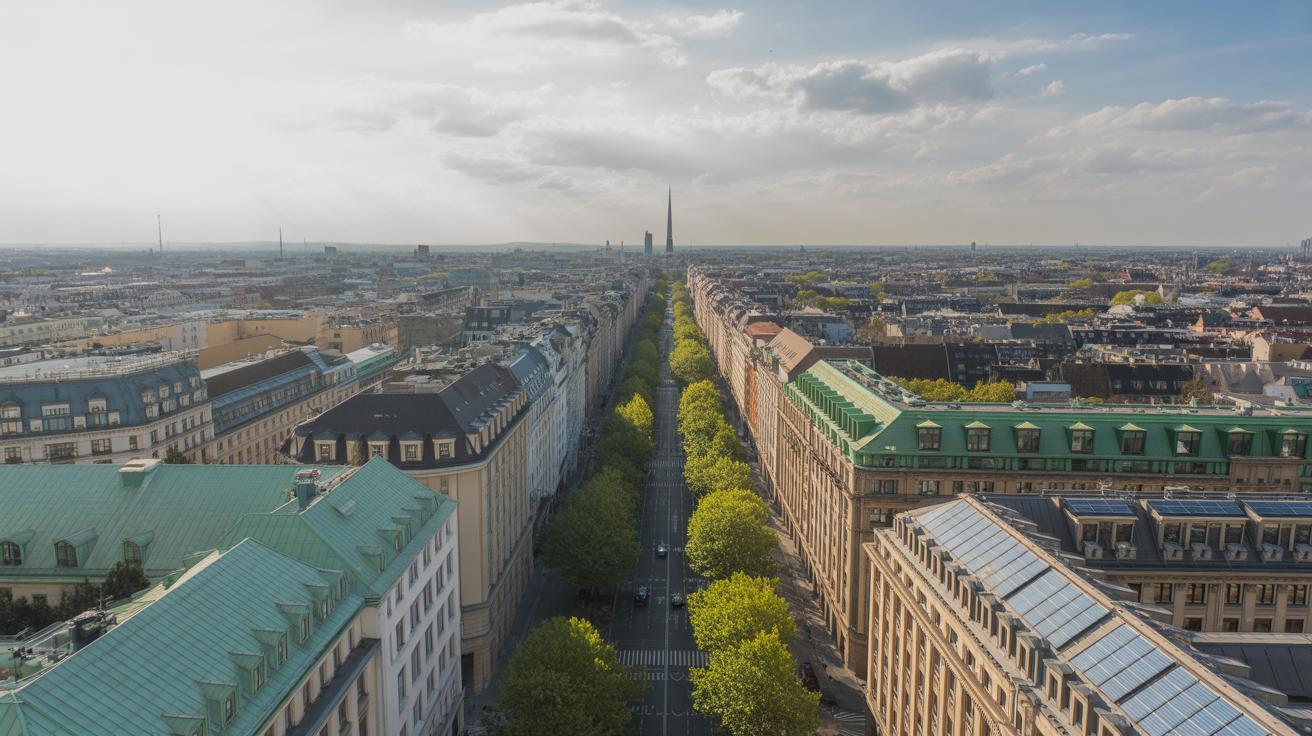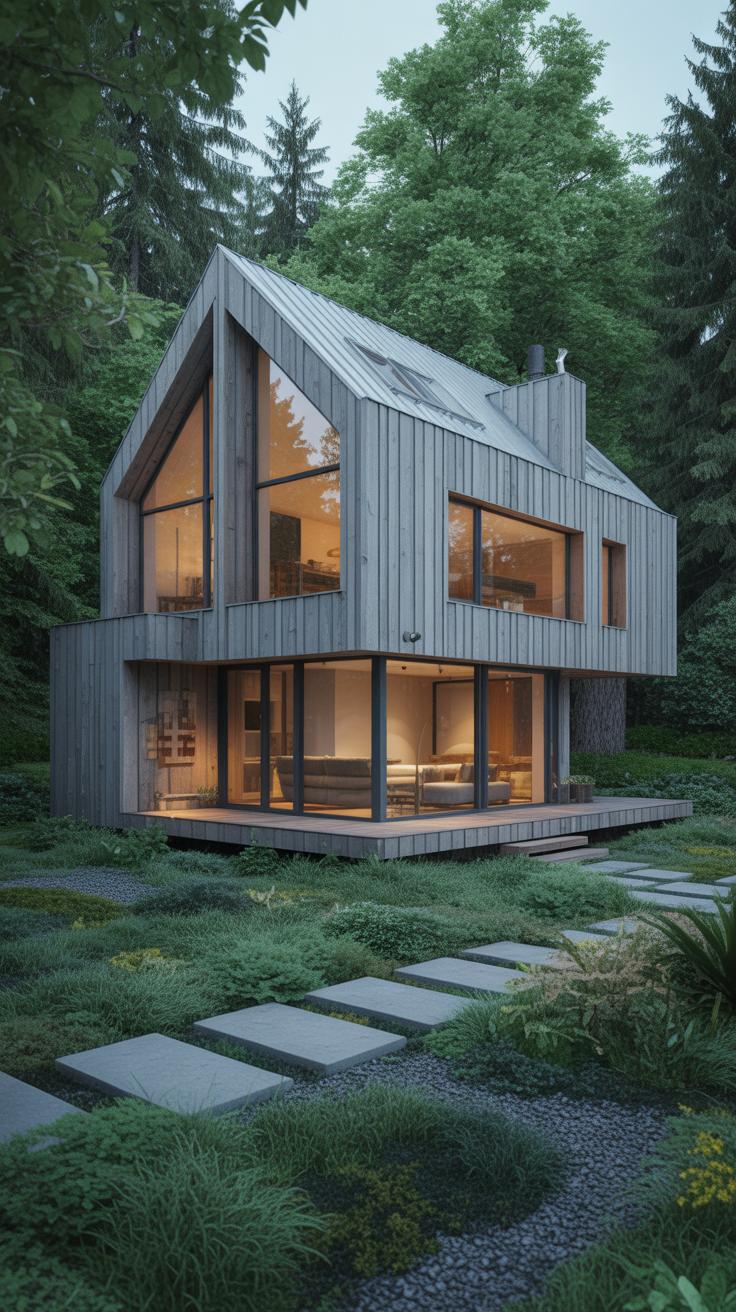Introduction
Biophilic architecture connects buildings to the natural world. This design style uses elements from nature to create spaces that feel alive and healthy. By bringing nature inside, buildings become more comfortable and inviting. People feel calm and refreshed in these natural environments.
This article explores stunning examples of biophilic architecture worldwide. You will learn about design ideas and see how buildings in different places use nature’s forms, light, and colors. Discover how you can apply these ideas to your spaces to make them more welcoming and beautiful.
What Is Biophilic Architecture
Biophilic architecture is a design approach that brings you closer to the natural world through built environments. It’s about more than just adding plants or windows—it aims to create spaces where people feel an intuitive connection to nature. The idea is simple yet powerful: we thrive better when nature is part of our everyday surroundings.
It’s interesting how this concept feels almost obvious now, but it’s actually a response to how modern life disconnects us from nature. Biophilic design tries to repair that gap by blending natural elements with architecture, making spaces that don’t just look pleasant but genuinely improve how you experience your environment.
The science behind biophilic design
The roots lie in the biophilia hypothesis, which suggests humans have an innate need to connect with nature. Scientists and psychologists argue that this connection is hardwired into us because it has helped humans survive for thousands of years. Simply put, our brains respond positively to natural patterns, daylight, greenery, and natural textures.
What I find fascinating is how subtle this reaction is. You might not notice it immediately, but being in a room with natural light and plants can lower your stress without you realizing it. This need isn’t just about liking trees—it’s about how deeply intertwined our minds are with nature’s rhythms and forms.
How biophilic architecture benefits people
There’s growing evidence that biophilic design can improve health, mood, and even productivity. Imagine working in a space flooded with daylight and fresh air, surrounded by wooden surfaces and living plants—that environment can reduce cortisol levels, which means less stress.
People often report feeling more focused and energized in biophilic spaces. Some studies have also found quicker healing times in hospitals that incorporate natural elements. Yet, it’s not always straightforward—sometimes, the way these elements are used matters as much as their presence.
So, when you think about your home or workplace, ask yourself: could connecting more with nature make your days better? Biophilic architecture tries to answer that question by reshaping how buildings interact with the natural world—and with you.
Key Elements Of Biophilic Design
Biophilic architecture leans heavily on some core features that bring the natural world inside. You can usually spot these elements quite easily, though how they combine might surprise you.
First, natural light shapes the experience of space in a building. Large windows, skylights, and open layouts allow sunlight to flood interiors. This isn’t just for brightness; it affects mood and even health.
- Plants appear throughout these designs—not just as decoration, but as living parts of the structure. You might find green walls, indoor gardens, or trees growing through floors.
- Water is another direct element. Fountains, ponds, or even small water features provide sound and movement, calming the mind and connecting you with nature’s rhythm.
- Natural materials like wood, stone, and clay ground a space. They offer texture and warmth that synthetic surfaces rarely achieve, sometimes even aging beautifully over time.
Direct experience with nature means you’re literally touching or seeing these elements up close. Imagine walking through a hallway where greenery climbs the walls or catching a glimpse of a water feature just outside your window. That kind of contact can make a space feel alive rather than lifeless.
On the flip side, indirect nature takes inspiration from patterns found outdoors—shapes, colors, and textures that mimic natural forms without being literal. Think curved lines resembling tree branches or color palettes drawn from earth and sky. These details resonate subconsciously, pulling you toward a sense of calm without you quite realizing why.
Sometimes, this plays out in ceiling designs that look like leaves or floors patterned after riverbeds. It’s subtle, but it shapes how the space feels. Do you notice these details yourself, or do they slip by unnoticed? Maybe that’s part of their quiet influence.
The History Of Biophilic Architecture
Early examples linking nature and buildings
Biophilic design isn’t exactly a new idea. People have been drawn to nature in their living spaces for thousands of years. Take the Hanging Gardens of Babylon, for instance—perhaps the earliest known example of blending greenery with architecture. Though their existence remains partly a mystery, ancient texts describe terraces lush with plants, waterfalls, and trees. It’s fascinating to think about how those gardens aimed to provide a refuge from harsh surroundings, creating a soothing environment that touched on what we now call biophilia.
Beyond Babylon, many ancient cultures valued nature in their buildings. Traditional Japanese houses often incorporated large verandas to link indoor life with gardens. The Romans had courtyards with fountains and plants right at the heart of their homes. These designs didn’t just look nice—they helped regulate temperature and improve air quality, instinctively acknowledging nature’s benefits without the modern language we use today.
Modern rise of biophilic design
Fast forward to recent decades, and biophilic architecture has become more intentional, systematic even. Scientific studies started revealing how contact with natural elements improves well-being, productivity, and even creativity. This sparked interest from architects, urban planners, and environmentalists who pushed for designs mimicking natural patterns.
Still, biophilic design didn’t always have a clear identity. It grew from trends like sustainable building and green architecture. Some early projects only hinted at biophilia, mixing plants into offices or adding green walls without a full strategy. Over time, the approach gained clearer definitions, focusing not just on aesthetics but on human health and psychological benefits. Today, many buildings purposely integrate daylight, water features, and natural materials as essential parts of their designs. It’s almost like rediscovering something old, yet making it fit a new world.
How Biophilic Architecture Works In Cities
Bringing nature into crowded urban spaces often starts with green rooftops and walls. These aren’t just patches of grass or greenery slapped on for decoration. Rooftop gardens can cool buildings, reduce stormwater runoff, and create little pockets of calm above the city buzz. Walls covered in climbing plants or living panels add texture, filter air, and even muffle noise. You might wonder if these green surfaces really change much in a sprawling cityscape. I think they do, though the effects can feel modest at times.
Inside buildings, letting in natural light and fresh air raises the comfort factor in ways artificial systems rarely match. Windows placed for maximum daylight reduce reliance on electric lighting and help maintain our internal clocks. Ventilation strategies, like operable windows or air shafts, encourage airflow and cut down on stuffiness. Sometimes, it’s tricky balancing natural light with heat gain or privacy, but when done well, indoor spaces feel more alive. Maybe you’ve noticed that rooms with sunlight and a breeze just seem easier to tolerate, even on a tough day.
In city settings, biophilic design isn’t just about adding plants or sunlight—it’s about careful choices that respond to the city’s scale and pace.
- Green rooftops provide oasis-like retreats and improve microclimates.
- Living walls clean the air and bring texture to urban facades.
- Skylights and large windows brighten interiors naturally.
- Ventilation systems that promote fresh air reduce dependence on AC.
What intrigues me most is how these elements can reconnect us with something basic and calming, even amid concrete and glass. It might not solve every urban challenge, but it certainly changes how we experience our buildings.
Famous Biophilic Buildings Around The World
Singapore’s Gardens by the Bay
Gardens by the Bay pushes the idea of biophilic design beyond traditional boundaries. It blends plants, water, and architecture in a way that feels natural but also engineered. The towering Supertrees, for example, aren’t just vertical gardens; they mimic natural patterns in their branching structures. These massive metal trees support a diverse range of plants, creating cool microclimates beneath them.
The two huge conservatories, Flower Dome and Cloud Forest, showcase how natural shapes influence the architecture’s form. Curved glass panels mimic the gentle slopes and folds you’d find in nature. This isn’t just aesthetic – the design controls humidity and temperature inside, replicating different climates to nurture various plant species. You might find yourself fascinated by how the building shapes are themselves borrowed from nature’s own geometry.
The whole space encourages visitors to feel connected to nature, even in a bustling city. But I wonder if you feel that sense more from the layout or the sheer volume of greenery? Either way, it’s hard to deny the calming effect when walking through these living structures.
The Bosco Verticale in Milan
In an urban setting like Milan, the Bosco Verticale is a bold approach to biophilic housing. Imagine an apartment building where each balcony hosts dozens of trees and shrubs, creating a vertical forest. It’s not just decoration; these plants help improve air quality and provide natural insulation for the building. The greenery reduces noise pollution too, which is quite clever in a busy city environment.
The architect looked at the challenge of limited urban space and decided, why not grow upwards? Trees can absorb carbon dioxide, reduce urban heat, and attract birds—all in one residential tower. It sparks a question: can living among real trees, even if on a balcony, shift how people experience city life?
Looking at Bosco Verticale, I think about how the residents must feel waking up surrounded by leaves and branches, instead of concrete and glass. It’s a glimpse, maybe, of how future cities could bring nature closer into daily life, without needing wide parks or open spaces nearby.
Simple Ways To Add Biophilic Design To Your Home
Bringing a bit of nature into your home doesn’t need to be complicated. Sometimes, small changes make a big difference. One of the easiest steps is simply placing a few indoor plants around your living space. Maybe a tall fiddle leaf fig by the window or a cluster of succulents on a shelf. You’d be surprised how much life these add, not just visually, but in how the air feels.
Speaking of windows, arranging your seating area near them to catch outdoor views can subtly connect you to nature. It doesn’t have to be a grand forest—just a glimpse of trees, a garden, or even the sky can help ground you. I’ve often found myself pausing more, just to watch the changing light or the movement outside.
Natural materials and colors also bring this connection indoors. Wood furniture, stone accents, and earthy tones help create a calm, grounded atmosphere. Think of a wooden coffee table or stone coasters—functional but also a quiet nod to the outdoors. Colors like soft browns, mossy greens, and muted grays can tie everything together without overwhelming the senses.
- Place a variety of indoor plants in different spots—windows, shelves, desks.
- Arrange chairs or couches close to windows with nature views.
- Use wood, stone, and other natural materials in furniture and decor.
- Choose earth tones such as browns, greens, and soft grays for walls or accents.
It’s interesting—some days, I notice how these little touches change my mood. Others, they almost disappear into the background. Maybe that’s the point. Biophilic design is not about constant awareness but a steady, gentle connection that’s just there, quietly supporting your space.
Challenges Of Biophilic Architecture
Bringing nature into buildings isn’t as simple as it sounds. You have to balance natural elements with the practical needs of the structure, and that balance is tricky. For example, living walls or indoor plants need regular maintenance—watering, pruning, pest control—which can be a hassle, especially in larger buildings where such upkeep scales up quickly.
Climate plays a big role too. In places with extreme temperatures or low humidity, keeping plants healthy inside can be a constant fight. Sometimes, the very features meant to connect us with nature start to feel like a burden because they don’t thrive as expected.
Costs and design complexities add another layer of challenge. Introducing natural materials and features often requires custom solutions: specialized irrigation systems, reinforced structures to hold soil or water, or unique window placements for natural light. All of this can quickly push project budgets up, making biophilic elements a tough sell in the early planning stages.
Still, creative thinking can help. Some architects opt for hardy native plant species or modular green panels that are easier to maintain. Others integrate simple daylighting strategies that don’t demand ongoing care. You might ask, is it worth it? Well, it depends on your priorities and readiness to tackle long-term upkeep.
Health Benefits From Biophilic Architecture
You might not realize it, but the spaces you spend time in can really affect how you feel—both physically and mentally. Biophilic architecture taps into this by bringing natural elements indoors, and many studies suggest this isn’t just about aesthetics.
Take stress reduction, for example. Being around natural views or materials—like wood, plants, or sunlight—can lower stress hormones. People often say they feel calmer in these spaces. I’ve noticed it myself; even a small office plant can make a long day less overwhelming. Researchers link access to daylight and greenery with lower blood pressure and a slower heart rate, which are subtle but meaningful changes.
Then there’s focus and productivity. Nature’s presence offers gentle distractions that can help your mind rest and reset. Some experiments show that students perform better and stay more attentive when classrooms include natural light and design elements reflecting the outdoors. So, biophilic spaces might help you work without feeling burnt out—though it’s not a magic fix for everyone.
Think about this: could your workplace or home benefit if it felt more connected to nature? Even small changes might help you manage stress or improve focus in ways you hadn’t expected.
Sustainable Design And Biophilic Architecture
Biophilic architecture and eco-friendly building practices often overlap, but their connection runs deeper than at first glance. You might think of biophilic design as just bringing nature indoors — plants, sunlight, natural materials — and sustainable design as cutting down on resource use. Yet, in many projects, these two goals go hand in hand, feeding each other in subtle ways.
For example, buildings designed with natural ventilation systems reduce reliance on mechanical cooling. This isn’t just good for energy conservation; it also creates a more natural airflow that humans instinctively respond to. You can sense the difference, even if it’s subtle. There’s a tangible feeling of comfort that plastic filters or air conditioning often miss.
Using Natural Resources Wisely
Biophilic buildings often conserve water and energy by taking cues from their surroundings—like how trees shade a space or channel rainwater. Green roofs, for instance, act as insulation, keeping buildings cooler in summer and warmer in winter, which then lowers energy use. Rainwater harvesting systems collect and reuse water to irrigate plants, closing the loop in a way that feels almost inevitable once you see it in action.
- Daylight maximization reduces artificial lighting needs and improves mood—you can’t deny the difference it makes in your day.
- Natural materials with high thermal mass, like stone or clay, help regulate interior temperatures without extra energy consumption.
- Smart landscaping with native plants requires less water and supports local ecosystems.
Creating Habitats For Wildlife
Buildings can do more than conserve resources; they can actively support urban wildlife. Birds, bees, and other pollinators face shrinking habitats, yet some biophilic designs intentionally create little refuges for them. Nesting boxes, green walls, and flowering plants attract species that would otherwise steer clear of city life.
It’s a slightly awkward balance, though—human spaces and animal habitats overlapping isn’t always a smooth match. But when done thoughtfully, it benefits both. I remember visiting a building where bees buzzed around a green roof garden. It wasn’t overwhelming or distracting, but noticeable enough to remind you nature hadn’t quite disappeared behind the glass and steel.
- Green facades can provide both shade and shelter for insects and birds.
- Water features offer essential drinking spots for wildlife, especially in drier cities.
- Plant diversity on-site encourages ecological variety, supporting different species.
So, sustainable design in biophilic architecture is more than reducing impact—it’s about fostering life, both human and non-human, within shared spaces. It asks you to consider what you might be overlooking, like a tiny bee or a quiet tree, in your everyday environment.
Future Trends In Biophilic Architecture
Biophilic architecture is moving beyond just adding plants or natural light. The future will likely focus on blending nature and technology in ways we haven’t fully imagined yet. Think of building materials that react to their environment—changing color or texture based on sunlight or temperature. Some new composites mimic natural surfaces while improving durability and breathability, making the environment inside a building feel more alive.
Smart sensors are also coming into play, adjusting ventilation or lighting by detecting subtle changes in air quality or humidity—almost like a building breathing alongside its occupants. I’ve seen prototypes that integrate moss walls connected to irrigation systems, needing less water because they respond to real-time moisture levels. It’s fascinating but still feels a bit experimental, doesn’t it?
On a broader scale, more cities are adopting biophilic principles not just for aesthetics but to tackle urban issues like heat islands and mental health. Developers are building parks vertically, adding green corridors, and encouraging rooftop gardens as usual, but some communities are also designing entire neighborhoods where nature isn’t an afterthought, but the framework. Would you want your home surrounded by trees growing through the streets, or is that too wild?
The expansion into community spaces brings up questions too. Can biophilic design fit everywhere, or is it best suited for certain climates or cultures? It’s an open debate, but the push for connection to nature keeps gaining momentum. Things feel like they’re shifting, slowly but surely. And even though it isn’t perfect just yet, the direction suggests a future where buildings and nature work more closely together, for real.
Conclusions
Biophilic architecture links us with nature in our daily surroundings. It offers practical ways to improve well-being by including natural light, plants, and views of the outside world. Buildings that embrace these ideas create healthier and happier places.
Understanding biophilic design can inspire you to make your own spaces more natural and enjoyable. From simple touches to large projects, using nature in architecture benefits both people and the planet. Explore these examples and imagine how nature can be part of your life.

